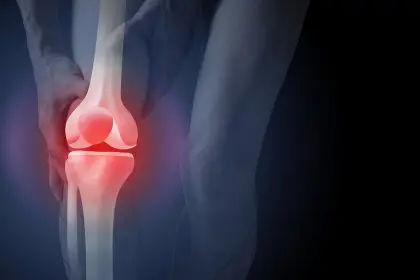When Julia Thompson noticed persistent stomach pain last summer, she dismissed it as stress-related indigestion. Like many Americans facing similar symptoms, she tried over-the-counter medications and dietary changes. Three months later, she received news that would change her life: stage 3 pancreatic cancer.
Thompson’s story reflects a devastating reality faced by thousands of Americans each year. Pancreatic cancer, one of the most lethal forms of the disease, often disguises itself as common ailments, leading to delayed diagnosis and treatment.
Why the pancreas plays hide and seek with doctors
Nestled deep within the abdomen, the pancreas serves as a vital yet often overlooked organ. This elongated gland, positioned behind the stomach, orchestrates crucial digestive processes and hormone production. Its hidden location makes early detection particularly challenging, as tumors can grow unnoticed until they affect surrounding organs.
The 5 ways pancreatic cancer masks itself as everyday problems
- The silent stomach ache Many patients initially mistake pancreatic cancer’s early warning signs for routine digestive issues. The upper abdominal pain, often radiating to the back, mirrors common conditions like acid reflux or ulcers. This similarity leads many people to rely on antacids or acid-reducing medications, potentially delaying crucial medical evaluation.
- The diabetes connection A sudden onset of diabetes, particularly in individuals over 50 with no previous risk factors, might signal pancreatic cancer. As tumors develop, they can impair the organ’s ability to produce insulin, creating symptoms that appear identical to type 2 diabetes. Medical records show that approximately 25% of pancreatic cancer patients receive a diabetes diagnosis in the months preceding their cancer detection.
- The mysterious weight loss Unexplained weight loss ranks among the most deceptive symptoms. While many celebrate unexpected weight loss, this change could indicate pancreatic cancer disrupting normal digestive processes. The weight loss often occurs alongside a decreased appetite, which patients frequently attribute to stress or dietary changes.
- The yellowing confusion When pancreatic tumors block bile ducts, patients develop jaundice – a yellowing of the skin and eyes. This symptom often leads doctors to investigate liver problems first, as liver disease represents a more common cause of jaundice. This medical detour can cost precious weeks or months before the true cause emerges.
- The digestive deception Changes in bowel habits, including light-colored stools or dark urine, frequently prompt patients to seek treatment for gastrointestinal issues. Doctors might initially suspect irritable bowel syndrome or inflammatory bowel disease, ordering tests that delay identification of pancreatic cancer.
Breaking through the disguise: New detection methods emerge
Medical researchers have developed advanced screening techniques to unmask pancreatic cancer earlier. These innovations include specialized blood tests that can detect specific tumor markers and high-resolution imaging methods that provide detailed views of the pancreas.
Recent developments in artificial intelligence-assisted imaging analysis help radiologists identify subtle changes that might indicate early-stage tumors. These technological advances offer hope for earlier detection, potentially improving survival rates that have remained stubbornly low for decades.
The role of family history in unmasking risk
Understanding family health history plays a crucial role in early detection. People with first-degree relatives who had pancreatic cancer face an increased risk of developing the disease. This knowledge enables doctors to implement more aggressive screening protocols for high-risk individuals.
When common symptoms deserve uncommon attention
Medical experts emphasize that certain combinations of symptoms warrant immediate medical evaluation. While individual symptoms might point to benign conditions, the presence of multiple warning signs – particularly in individuals over 50 – should trigger comprehensive testing.
Contemporary research reveals that most pancreatic cancer patients experience at least three seemingly unrelated symptoms in the months before diagnosis. This pattern highlights the importance of tracking and reporting all health changes to medical providers, even those that seem minor in isolation.
A path forward: Improving detection rates
Medical centers across the country have established specialized pancreatic cancer screening programs. These initiatives focus on identifying high-risk individuals and implementing regular monitoring protocols. The programs combine genetic testing, advanced imaging, and blood marker analysis to detect the disease at its earliest possible stage.
The impact of early recognition
Early detection dramatically influences survival rates. Statistics show that patients diagnosed with localized pancreatic cancer have a significantly better prognosis than those whose cancer has spread. This reality underscores the critical importance of recognizing and investigating suspicious symptoms promptly.
A collaborative approach to detection
Medical professionals increasingly advocate for a team-based approach to pancreatic cancer detection. This strategy brings together primary care physicians, gastroenterologists, radiologists, and genetic counselors to evaluate suspicious symptoms comprehensively. The collaborative model helps ensure that concerning symptoms receive appropriate attention and investigation.
Looking ahead: Hope through awareness
Increased awareness of pancreatic cancer’s deceptive nature represents a crucial step toward improving detection rates. Understanding how this disease mimics common conditions empowers both patients and healthcare providers to investigate persistent symptoms more thoroughly.
The medical community continues working to develop more effective screening methods and diagnostic tools. These efforts, combined with growing public awareness, offer hope for detecting pancreatic cancer earlier and improving outcomes for future patients.
Resources for concerned individuals
People experiencing persistent symptoms or those with a family history of pancreatic cancer can access specialized screening programs through major medical centers. These programs provide comprehensive risk assessment and monitoring services, potentially enabling life-saving early detection.
As awareness grows and detection methods improve, the medical community remains committed to unmasking pancreatic cancer’s deceptive symptoms earlier. This commitment, combined with advancing technology and research, offers hope for better outcomes in the future.















